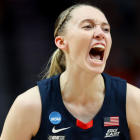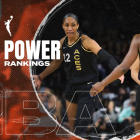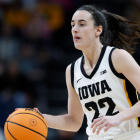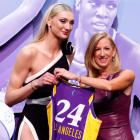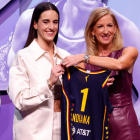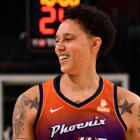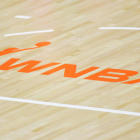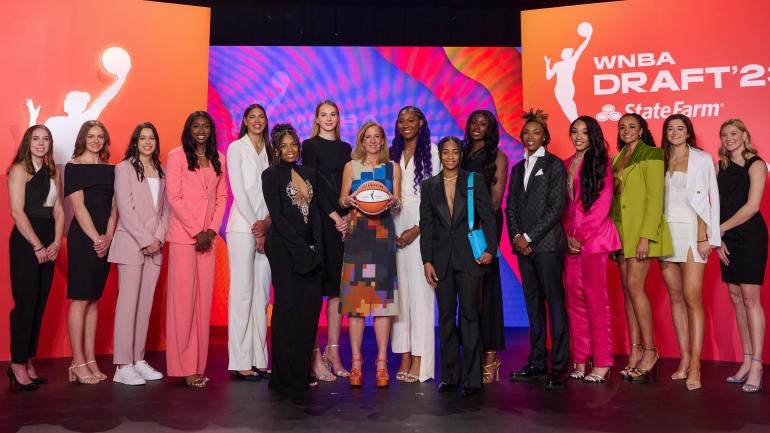
Heading into the 2023 WNBA Draft, the only thing we knew for sure was that Aliyah Boston would be the No. 1 overall pick to the Indiana Fever. The murkiness about everything else meant we could have been in for a chaotic evening. Instead, the draft went along without much drama; there was only one trade and very few surprising first-round selections.
With all of the action now complete, here's a look at the biggest winners and losers from Monday night. For first-round grades and full results, go here.
Winner: Indiana Fever
We've known for months now that the Fever were going to get Aliyah Boston with the No. 1 overall pick, but that doesn't make them any less of a winner. The former Naismith Player of the Year and three-time unanimous First Team All-American is a true franchise-changing talent who can help turn around a Fever team that hasn't made the playoffs since 2016.
She was a dominant interior presence on defense for South Carolina and has the size (6-foot-5) and athleticism to be the same type of player at the professional level. On offense, she still has room to improve as a shooter but has an array of post moves and finishes efficiently around the basket. We also rarely saw her full offensive arsenal due to opponents double and triple-teaming her in college. In addition, Boston has all of the intangibles that you'd want in a cornerstone player.
Drafting Boston alone would have made this one of the best nights in Fever history. Still, they also added Grace Berger at No. 7 and Taylor Mikesell at No. 13. Berger is a tough, versatile, and reliable guard with great size and should help the Fever right away, while Mikesell is one of the best shooters in the draft and could give them a much-needed floor spacer.
The Fever are still a few years away from making any sort of noise in the playoffs, but with Boston joining Kelsey Mitchell and NaLyssa Smith, they are finally on the right path again.
Loser: Brea Beal
After four stellar seasons at South Carolina, Beal was one of the 15 players invited to the draft by the league and was widely projected to be a top-10 pick. Instead, she fell all the way to the end of the second round, where the Minnesota Lynx selected her with the No. 24 overall pick.
Beal was a high-level perimeter defender in college, where she was an All-SEC Defensive team selection and a finalist for Naismith Defensive Player of the Year this season. There were questions about her offensive game, though, as she averaged 6.1 points per game for her collegiate career and, until this season, had been a poor 3-point shooter. If teams weren't convinced she could be an elite defender in the pros, it's understandable they may have passed on her at the top of the draft. However, it is quite a surprise that she fell as far as she did.
The silver lining for Beal is that she landed in Minnesota with Cheryl Reeve, one of the league's best defensive minds. She'll have a real chance to make the Lynx's opening-day roster.
Winner and loser: Wings
If you looked only at the players the Wings acquired, you would rightly conclude that they had a strong draft: Maddy Siegrist (No. 3), Stephanie Soares (No. 4), Lou Lopez Senechal (No. 5), Abby Meyers (No. 11), Ashley Joens (No. 19) and Paige Robinson (No. 31).
Siegrist led the nation in scoring last season at 29.2 points per game while shooting 36.1 percent from 3-point land and should fill the scoring and shooting void created by the offseason departures of Allisha Gray and Marina Mabrey. So too, should Lopez Senechal, who made 44 percent of her 3-point attempts for UConn last season and was the best outside shooter in the draft. Meyers (38.8 percent), Joens (35.3 percent), and Robinson (38.4 percent), meanwhile, are all strong shooters with good size in their own rights who should compete for roster spots. Finally, Soares arguably has as much upside as anyone in the draft outside of Boston, given her potential as a rim-protecting, floor-spacing big.
When you look at the process, though, it's a bit confusing -- particularly the Soares deal. While the Brazilian certainly has potential, she's also a real question mark. For one, she's now suffered multiple ACL tears in the span of a few years and will not be able to play this summer. And two, she's only played 13 games at the Division I level, having spent the beginning of her collegiate career at an NAIA school called The Master's University. If Soares had been there at No. 5 or even No. 11, it would have been a worthwhile gamble, but giving up a first-round pick in 2025, which has the potential to be a terrific draft class, and a 2024 second-round pick is a steep price for a player who brings that much risk.
You could also make a case that they reached on both Senechal and Meyers, and too many of their picks have overlapping skill sets, making it difficult for them to make the roster. Wings president and CEO Greg Bibb's words before the draft about forging their own path proved to be true.
"When you look at our draft, you may say, 'Gosh, I don't know if I would have evaluated that player to the same height or extent as you would,'" Bibb told CBS Sports. "But then you may look at it differently when you understand what we're trying to do."
Time will tell if what they're trying to do works.















